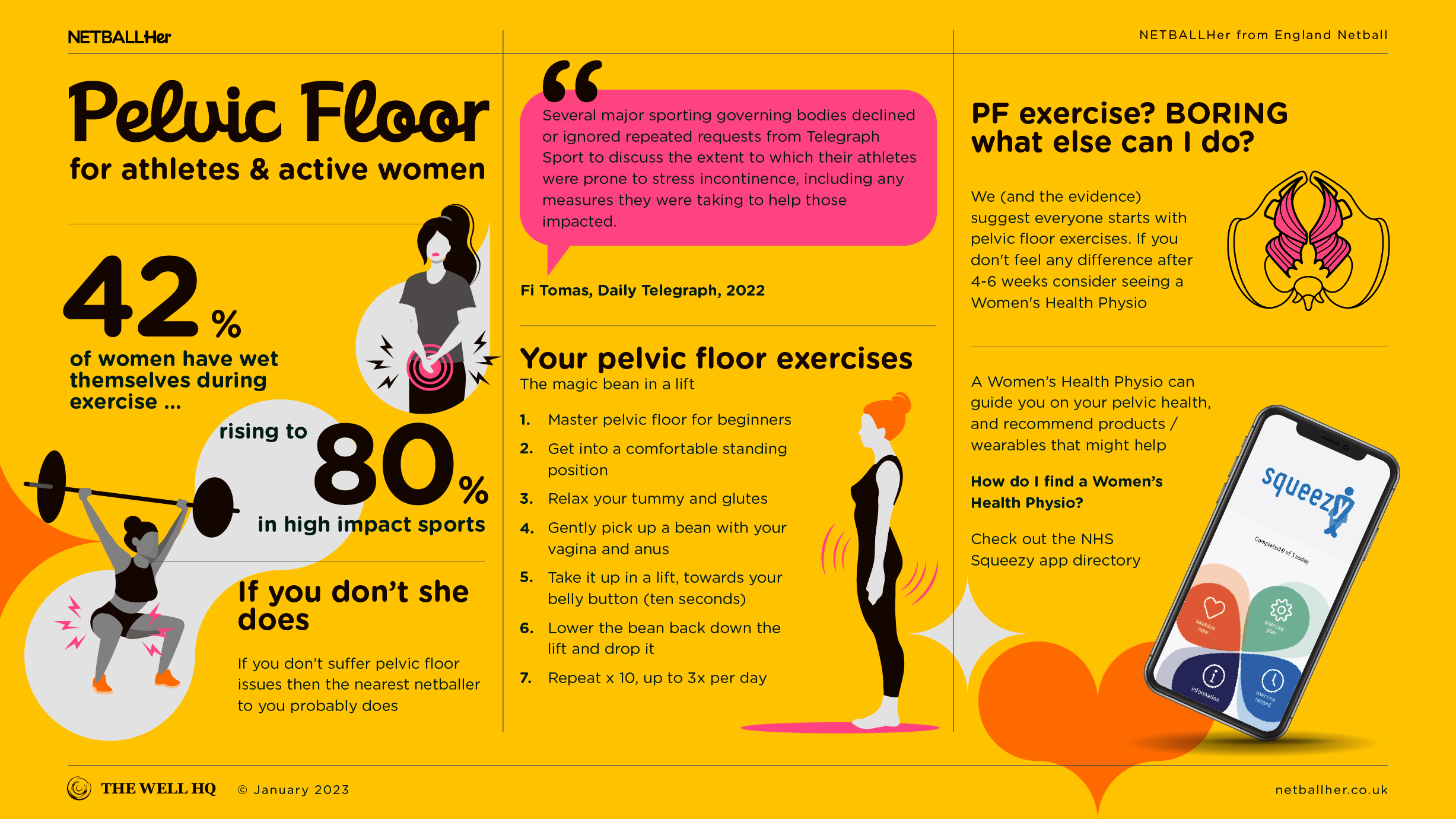Click play for an audio readthrough of this article
Too boring, not working, the right time to do it … your questions answered
I find them boring – can’t I just buy something?
There are more and more products coming onto the market to support pelvic health which is amazing to see. But which product is right for you depends on the underlying problem – and why you’re experiencing it.
So we recommend you first visit a professional and get an accurate assessment of what’s up before spending lots of money (or letting anything into your vagina) without knowing for sure if it’ll help.
Can I train my pelvic floor when I pee?
Short answer – no.
Long answer: sitting isn’t the best position to train your pelvic floor (better lying or standing). But more importantly, training mid-pee messes with the feedback mechanism between your bladder and brain. If you’re peeing and deliberately stop, you tell your brain that you’re done when you’re not.
It’s important to train the pelvic floor to relax when you’re peeing, and to resist the pressure or risk of peeing when you’re running, jumping, lifting, training and so on. In other words – train your pelvic floor to do the right job at the right moment.
Why aren’t my pelvic floor exercises working?
If after a couple of weeks you’re not noticing any improvements, or your symptoms are getting worse, it’s most likely because a) you’re not doing them right or b) you might have overtrained and now your pelvic floor’s too tight.
Either way, you could probably use some extra help so seek out a Women’s Health Physio. In the meantime, if you suspect your pelvic floor is too tight then try to focus more on the relax-and-let-go part of your exercise.
I can only lift for a couple of seconds – is that enough?
It’s fine at the beginning, but if you’ve stuck with your daily exercises for a few weeks you want to aim higher – lifting and holding for 10 seconds in a standing position.
I can feel my tummy / glutes contracting when I do my pelvic floor exercises. Is that OK?
It’s very normal but in an ideal world you’re working solely and specifically on only the pelvic floor. Try to engage only your pelvic floor without squeezing anything else.
Why can’t I feel my pelvic floor relaxing?
Don’t worry – this is common. Many of us hold in our stomachs by default or habit, especially when we’re stressed or anxious. The tension we hold in the stomach transfers into the pelvic floor.
Many women, especially active women, find the lifting part of the pelvic floor exercise easy, less so the relaxing and letting go part. It can be tricky to master so be patient and consistent – give yourself time and space to feel the release.
Why does it feel weird lifting the pelvic floor on the exhale?
The pelvic floor works with the diaphragm. The diaphragm lifts up on the exhale and takes the pelvic floor with it. This is normal but it feels weird because many of us have learned alternative breathing techniques via sport and exercise.
What age should girls start pelvic floor exercises?
It’s good to teach the basics about bladder and bowel health from a young age (see our quiz). If girls are experiencing leaking or pain then pelvic floor exercises should definitely be part of the conversation.
Pelvic floor exercises aren’t strictly necessary until a female reaches her 20s unless she’s in a high performance sport. In that case, pelvic health should be a core part of her strength and conditioning programme.
I only leak a bit and only when I’m running – can I ignore all this?
Of course you can … but you shouldn’t. Leaking at all is a sign that your body isn’t effectively managing what you’re asking it to do. We only get one pelvic floor and we need it to last as long as possible. The sooner you get on it the better.
If you only leak at the end of a very long session then some relatively new thinking suggests that this might be OK. The theory is that your whole body is fatigued, pelvic floor included. But any more than this and for sure you need to address it.
I’ve lasted fine until now, maybe I don’t need the exercises?
That’s a nice thought, but the odds of you developing pelvic floor issues increase with age.
Pelvic floor issues are almost a certainty when you’re pregnant and post-natal, and again when your move into midlife and menopause. It’s best to learn the ropes now: make a habit of training the pelvic floor and do your future self a favour.
As a reminder, the content of the course belongs to The Well HQ. You have permission to access and use the content yourself or, if you are an organisation, for the number of users selected, but are not otherwise permitted to share such content with others, all in accordance with our Course Terms and Conditions.

